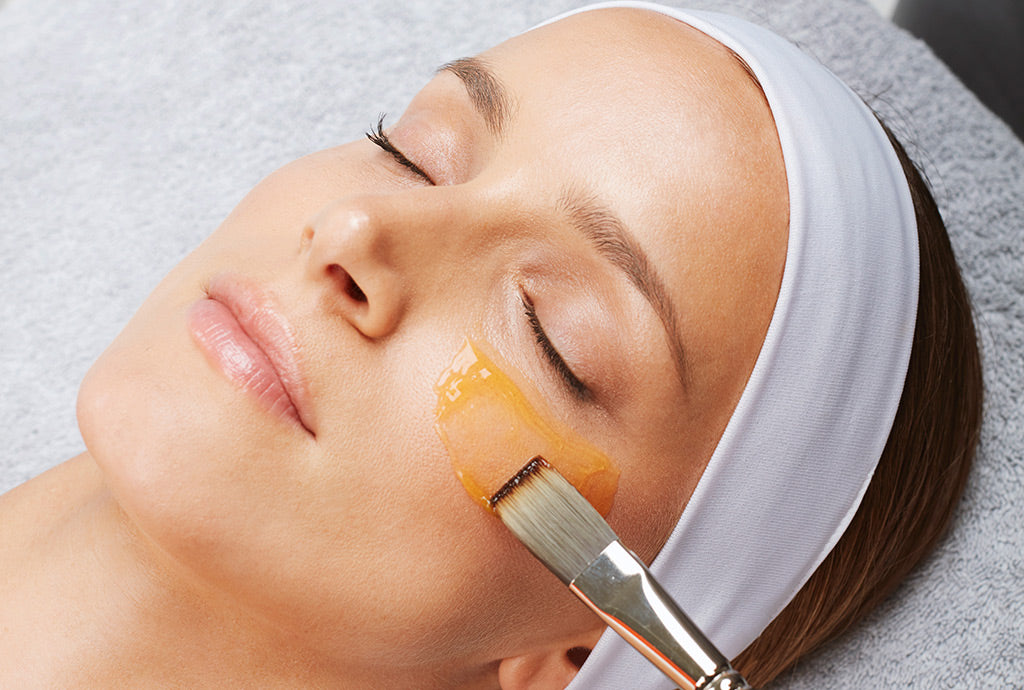Chemical peels have long been a go-to solution for skin rejuvenation. From tackling fine lines and pigmentation to enhancing skin texture, peels come in many forms and strengths. But among them, one name has been generating curiosity: Cold Peel in Dubai. With its rising popularity and promising results, many are wondering—is cold peel considered a mild peel? Let's dive into what makes this treatment unique and whether it truly falls into the "mild" category.

What is a Cold Peel?
A cold peel is a type of skin treatment that uses low-temperature, non-aggressive chemical agents to exfoliate and refresh the skin. Unlike traditional chemical peels that rely on heat or aggressive acids, cold peels are designed to minimize irritation and downtime. They usually contain a gentle combination of ingredients such as alpha hydroxy acids (AHAs), beta hydroxy acids (BHAs), and enzymes that work together to remove the outermost layer of dead skin cells.
The “cold” in cold peel refers not to temperature alone but to the calming, anti-inflammatory nature of the treatment. This makes it suitable for individuals with sensitive or reactive skin types who may not tolerate harsher peels.
Mild, Moderate, or Deep: Where Does Cold Peel Fit?
Chemical peels are generally categorized into three types:
Superficial (Mild) Peels – These exfoliate only the outermost layer of the skin (epidermis). Recovery time is minimal, and they often use low concentrations of AHAs or enzymes.
Medium Peels – These penetrate into the middle layer of skin (dermis) and are more intense, often requiring several days of downtime.
Deep Peels – These go even deeper, requiring longer recovery periods and often producing more dramatic results.
So, where does a cold peel fall in this hierarchy? Most experts classify cold peels as a mild or superficial treatment. The active ingredients are typically low in concentration and formulated to provide gentle exfoliation without triggering inflammation or extensive peeling. They offer a refreshed glow rather than a dramatic transformation—which is ideal for people looking for subtle, gradual improvement.
Who Benefits Most from Cold Peels?
Since cold peels are on the gentler side, they’re perfect for:
Individuals with sensitive skin who may experience irritation from traditional chemical peels.
Those looking for a maintenance treatment rather than a one-time intensive procedure.
People who want a quick recovery with minimal downtime—perfect for busy lifestyles.
Individuals experiencing dullness, mild pigmentation, or uneven texture.
Additionally, cold peels can be a great option during hot or sunny seasons when deeper peels might be too aggressive or pose higher risks of post-treatment pigmentation.
What Happens During a Cold Peel?
The cold peel procedure typically begins with a thorough cleansing of the skin to remove dirt, oil, and makeup. A preparatory solution may be applied to prime the skin. Then, the cold peel formula is gently brushed onto the face. You may experience a slight tingling sensation, but most people find it comfortable and soothing.
Unlike stronger peels, there is usually no visible peeling or flaking afterward. Instead, the skin feels softer, looks brighter, and appears more refined within a few days. The treatment is often repeated in a series to build up results over time, making it ideal for those new to chemical peels or those looking for consistent, long-term skin improvement.

How is Cold Peel Different from Other Peels?
One of the defining characteristics of cold peels is their skin-calming formulation. Traditional peels often involve heat, redness, and discomfort—sometimes even swelling and visible peeling. While effective, these reactions can deter people with lower pain thresholds or sensitive skin types.
Cold peels skip the drama. They rely on ingredients that work in harmony with your skin’s natural chemistry, often including antioxidants, anti-inflammatory agents, and hydrating components. This makes them a safer, more approachable alternative for many people.
Another key difference lies in how the skin responds post-treatment. Traditional peels aim to create visible shedding of the skin as a sign of exfoliation, while cold peels prioritize smoothness and radiance without that overt “peeling” phase.
Are Cold Peels Effective?
Yes, cold peels are effective—especially when used consistently and as part of a tailored skincare routine. While they may not offer the dramatic changes of deeper peels, they excel at revitalizing tired skin, improving tone and texture, and enhancing radiance without the risks associated with harsher treatments.
In fact, many people find cold peels to be the perfect solution when their skin needs a gentle refresh rather than a major overhaul. For those hesitant about chemical exfoliation, it provides a stepping stone toward more advanced treatments if desired later on.
Final Thoughts
So, to answer the question: Is cold peel considered a mild peel? Absolutely. It falls squarely into the category of superficial peels, offering gentle yet noticeable benefits with virtually no downtime. Its calming formula and subtle effects make it a favourite for many—especially those who want glowing skin without irritation or recovery.
Whether you're new to peels or simply looking for a gentler option, exploring a Cold Peel Dubai could be a step toward healthier, more radiant skin. As always, it’s important to choose treatments that align with your skin’s unique needs and your lifestyle goals.